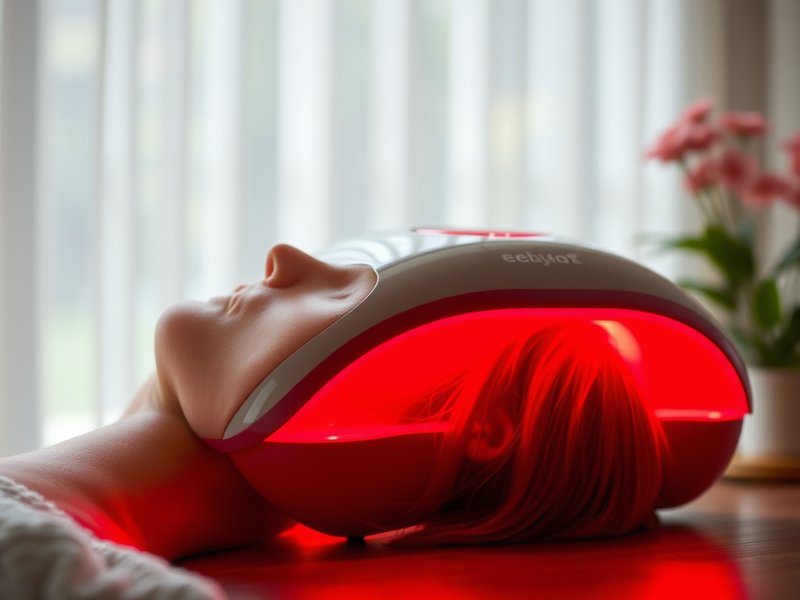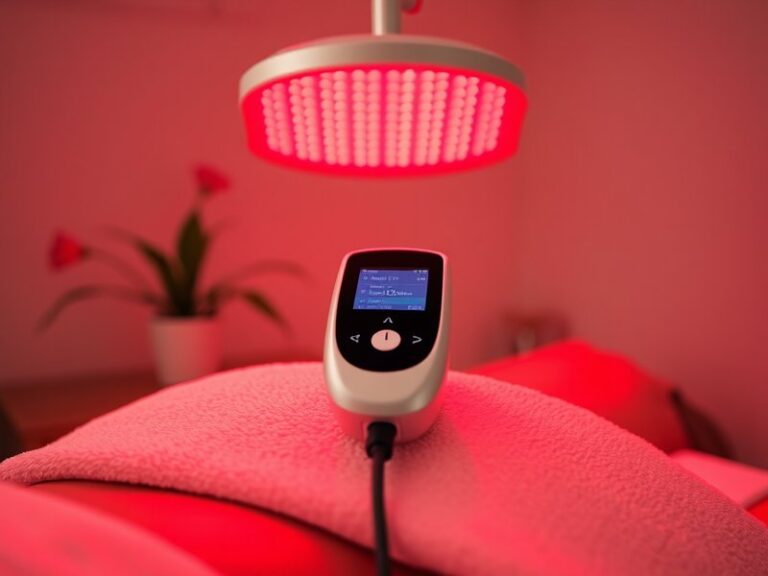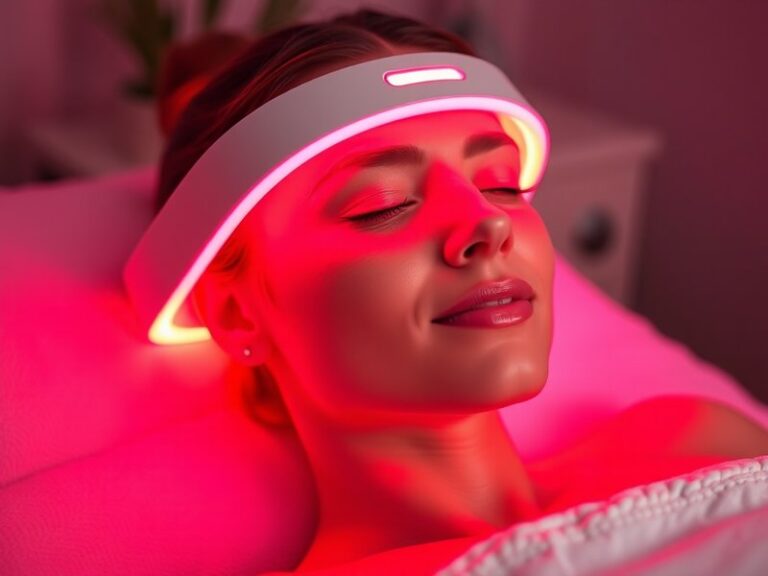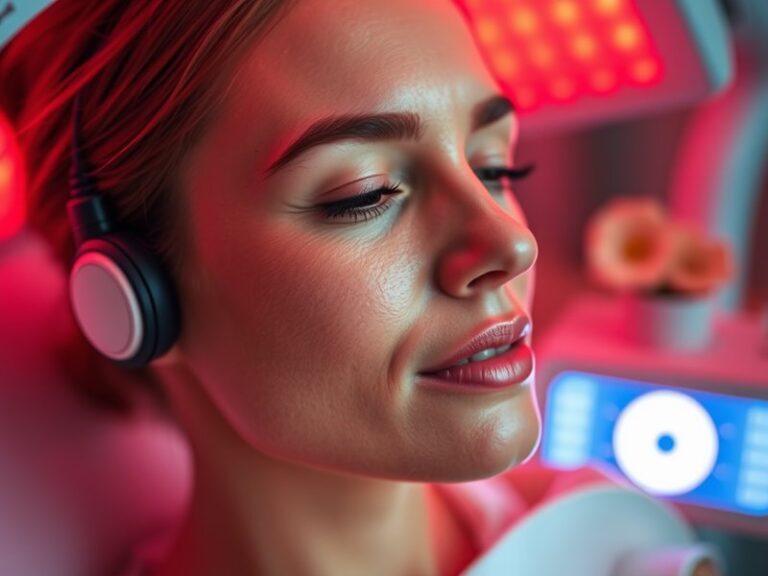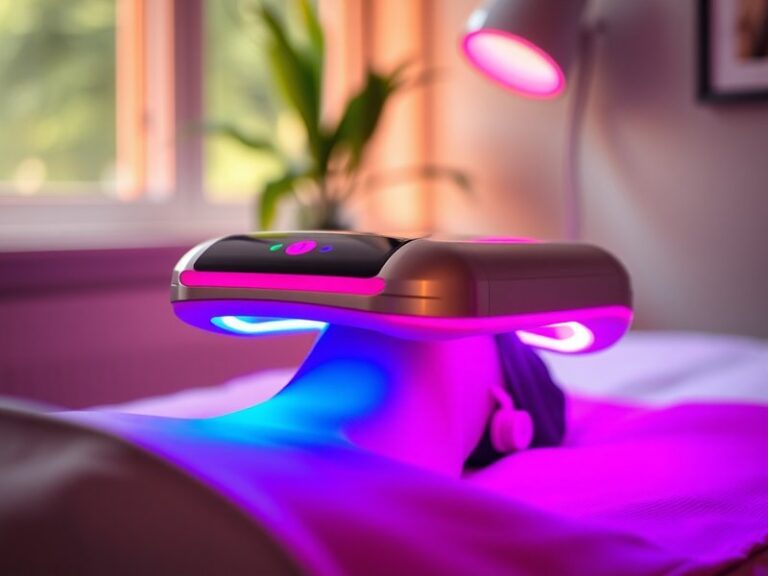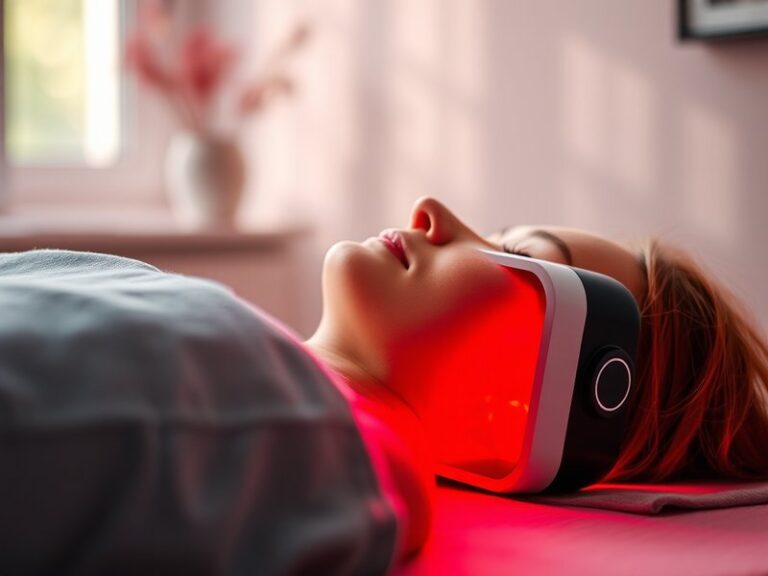What Makes Red Light Therapy Work?
What Makes Red Light Therapy Work?
Have you ever wondered how a specific wavelength of light can have profound effects on your health and well-being?
In this article, we will delve into the science behind red light therapy, exploring the mechanisms that make it effective, its numerous benefits, and considerations for anyone thinking about trying it. We aim to provide a comprehensive understanding of how this therapy works and the potential it holds for various applications.
Key Takeaways
- Red light therapy uses specific wavelengths to stimulate cellular function and promote healing.
- Numerous studies support its efficacy in reducing inflammation, enhancing skin health, and improving muscle recovery.
- It’s important to understand both the benefits and limitations before starting red light therapy.
What is Red Light Therapy?
Red light therapy (RLT) is a treatment that utilizes low-level wavelengths of red and near-infrared light to promote healing and recovery in the body. This non-invasive therapy is typically administered through various devices such as LED panels, handheld devices, or even light-emitting diodes embedded in fabrics.
Discover the full story Red Light Therapy Frequency at Home
The idea behind RLT is grounded in photobiomodulation, a process by which cells absorb light and convert it into cellular energy, thereby enhancing biological processes. This therapy has gained popularity for its application in skincare, pain management, wound healing, and muscle recovery.
How Does Red Light Therapy Work?
RLT works through several mechanisms:
-
Stimulation of Mitochondria: The primary action of red light is on mitochondria, the powerhouse of the cell. When cells absorb red light, they increase adenosine triphosphate (ATP) production, providing more energy for various cellular functions.
-
Reduction of Oxidative Stress: Red light can help reduce oxidative stress, which is linked to various health problems, by boosting the body’s antioxidant defense mechanisms.
-
Enhanced Blood Flow: The therapy can improve circulation and oxygenation in tissues, contributing to better healing and recovery.
What are the Benefits of Red Light Therapy?
The benefits of red light therapy are wide-ranging and have been supported by numerous scientific studies. Here’s a closer look at some of its most notable advantages.
Skin Health Improvement
RLT has been shown to promote various aspects of skin health, including increased collagen production, reduction of fine lines and wrinkles, and improvement in conditions like acne and psoriasis.
Pain Relief and Inflammation Reduction
Studies have demonstrated that RLT can significantly reduce pain and inflammation in conditions like arthritis, tendonitis, and muscle strains by enhancing cellular repair and decreasing inflammatory responses.
Read the deep dive Does Red Light Therapy Cause Headaches?
Enhanced Muscle Recovery
Athletes often turn to red light therapy for faster recovery from intense workouts. Research indicates that it can reduce delayed onset muscle soreness (DOMS), speed up healing processes, and enhance overall performance.
Wound Healing
RLT has been proven effective in accelerating the healing of wounds, burns, and surgical incisions by promoting cell proliferation and collagen synthesis.
Mood Enhancement
Some evidence suggests that red light therapy may help improve mood and alleviate symptoms of depression and anxiety, likely due to its effects on circadian rhythms and overall well-being.
Is it Possible to Use Red Light Therapy at Home?
Yes, many at-home devices are available for individuals looking to benefit from red light therapy without visiting a clinic. However, some considerations apply to ensure safety and efficacy.
What are the Advantages of At-Home Red Light Therapy?
-
Convenience: At-home devices allow you to incorporate therapy into your daily routine without scheduling clinic appointments.
-
Cost-Effectiveness: Investing in a device can be more cost-effective in the long run compared to ongoing treatment sessions in a professional setting.
-
Privacy and Comfort: Using devices at home provides a comfortable environment where you can relax while undergoing therapy.
What are the Disadvantages of At-Home Red Light Therapy?
-
Device Quality: Not all red light therapy devices on the market are created equal. Ensuring the device is clinically tested and provides the correct wavelengths is essential.
-
Limited Scope: Some at-home devices may not deliver the same intensity or penetration depth as the professional-grade equipment found in clinics.
-
Self-Administration: Users must be diligent in following usage instructions, as improper use can lead to minimal benefits or skin irritation.
What are the Things to Consider Before Trying Red Light Therapy?
When considering red light therapy, several essential factors should be taken into account to maximize benefits and minimize risks.
Consulting with a Healthcare Professional
Before starting any new therapy, it’s vital to consult with a healthcare provider, particularly if you have underlying health conditions or are currently taking medications.
Evaluating Device Quality
Invest in a reputable brand that uses clinical-grade technology and adheres to safety standards. Look for devices that specify the wavelengths emitted and provide user testimonials or clinical research.
Understanding Treatment Protocols
Familiarize yourself with recommended treatment protocols, including dosage, duration, and frequency, to optimize the therapy’s effectiveness.
Skin Sensitivity
If you have sensitive skin or a history of photosensitivity, discuss potential risks with a healthcare professional before using red light therapy.
What are the Alternatives to Red Light Therapy?
While red light therapy offers unique benefits, several alternative treatments can also aid in healing and recovery.
Infrared Sauna
Infrared saunas use infrared light to heat your body directly rather than warming the air around you. This therapy promotes detoxification, relaxation, and skin health.
Cryotherapy
Cryotherapy involves exposing the body to extremely cold temperatures for a short period, which can reduce inflammation, alleviate pain, and improve recovery times.
LED Light Therapy
Similar to RLT but can encompass a broader spectrum, including blue and green light for treating different skin conditions such as acne or pigmentation.
Massage Therapy
Manual manipulation of soft tissue can relieve muscle soreness, promote relaxation, and improve circulation, offering a holistic approach to recovery.
Conclusion: Is it Recommended to Use Red Light Therapy?
Red light therapy presents a promising, non-invasive treatment option for a variety of health concerns, from skin rejuvenation to pain relief. Its ability to stimulate cellular processes and promote healing makes it an attractive option for many individuals. However, it is essential to weigh the benefits against potential drawbacks and to consult with a healthcare professional before starting therapy, especially for those with pre-existing conditions.
Frequently Asked Questions
How long does it take to see results from red light therapy?
Results can vary depending on the condition being treated and the specific parameters of treatment, but many individuals start noticing improvements within a few weeks of consistent use.
Is red light therapy safe for everyone?
Most people can safely use red light therapy; however, individuals with certain medical conditions or skin sensitivities should consult a healthcare professional prior to use.
Can I use red light therapy while pregnant?
While there are no definitive guidelines against it, it’s recommended to consult with a doctor before using red light therapy during pregnancy.
How often should I use red light therapy for optimal results?
Frequency can depend on individual goals and the severity of conditions being treated, but many protocols suggest sessions 2-3 times a week for best results.
What should I expect during a red light therapy session?
During a session, you may feel warmth but should not experience discomfort. Sessions typically last between 10 to 20 minutes, depending on the device and treatment goals.
